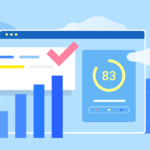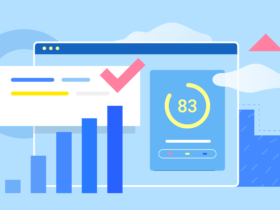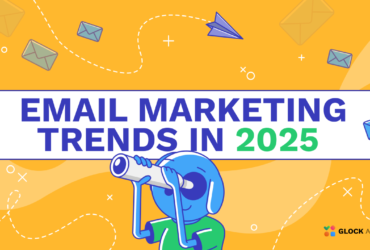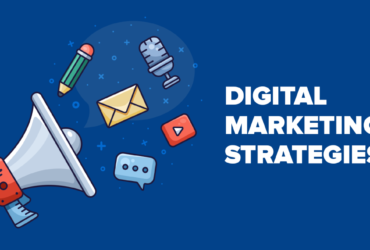In the digital era, data is the backbone of successful marketing strategies. Leveraging data analytics empowers businesses to make informed decisions, optimize campaigns, and achieve measurable results. But how do you effectively use data analytics to improve your digital marketing campaigns? This comprehensive guide will explore the role of data in digital marketing and provide actionable insights to harness its potential for business growth.
What is Data Analytics in Digital Marketing?
Data analytics refers to the process of collecting, processing, and analyzing data to extract valuable insights. In digital marketing, this involves tracking user behaviors, engagement metrics, and campaign performance across platforms to refine strategies and drive better outcomes.
Key components of data analytics in digital marketing include:
- Data Collection: Gathering information from various sources, such as social media, website traffic, email campaigns, and paid ads.
- Data Analysis: Identifying patterns, trends, and correlations within the collected data.
- Actionable Insights: Using findings to guide marketing decisions and improve ROI.
Why is Data Analytics Essential for Digital Marketing?
1. Informed Decision-Making
Data eliminates guesswork by providing actionable insights into what works and what doesn’t. This helps marketers focus on high-performing strategies.
2. Personalization
With analytics, you can segment your audience based on behaviors, preferences, and demographics, enabling personalized marketing messages that resonate.
3. Optimized Budget Allocation
Data reveals which channels deliver the best ROI, allowing businesses to allocate resources more effectively.
Also Read
4. Improved Customer Journey Mapping
Analytics helps track customer interactions across various touchpoints, ensuring a seamless and engaging experience.
5. Enhanced Campaign Performance
By continuously analyzing performance metrics, marketers can identify opportunities for improvement and fine-tune campaigns for better results.
How to Leverage Data Analytics for Better Campaigns
1. Define Clear Goals and Key Performance Indicators (KPIs)
Before diving into data, establish what success looks like for your campaign.
- Examples of KPIs: website traffic, conversion rates, click-through rates (CTR), cost per acquisition (CPA), and engagement metrics.
- Ensure goals are Specific, Measurable, Achievable, Relevant, and Time-bound (SMART).
2. Use the Right Analytics Tools
Invest in tools that align with your business needs.
- Google Analytics: Tracks website traffic, user behavior, and conversions.
- Social Media Analytics Tools: Platforms like Facebook Insights and Twitter Analytics offer data on audience engagement and post performance.
- Email Marketing Tools: Tools like Mailchimp and HubSpot provide insights into open rates, CTRs, and unsubscribes.
- Customer Relationship Management (CRM) Software: Tools like Salesforce help track customer interactions and sales funnels.
3. Analyze Audience Data
Understanding your audience is the foundation of effective marketing.
- Demographics: Age, gender, location, and occupation.
- Behavioral Data: Website visits, time spent on pages, and purchase history.
- Psychographics: Interests, values, and preferences.
Use this data to create detailed buyer personas that guide your campaigns.
4. Optimize Content Marketing with Data
Content is king, but data ensures it reaches the right audience.
- Identify high-performing content using tools like BuzzSumo or SEMrush.
- Analyze keyword performance to align content with search intent.
- Use heatmaps (e.g., Hotjar) to determine which sections of your content are most engaging.
5. Track and Improve Ad Campaigns
Paid advertising thrives on data analytics.
- A/B Testing: Experiment with different ad creatives, headlines, and CTAs to determine what resonates best with your audience.
- Conversion Tracking: Use pixels and tracking codes to monitor user actions after clicking on your ads.
- Attribution Models: Understand which channels contribute most to conversions.
6. Leverage Predictive Analytics
Predictive analytics uses historical data to forecast future trends.
- Tools like IBM Watson or Tableau can predict user behaviors, helping you proactively adjust campaigns.
7. Monitor Competitor Data
Analyzing competitors’ strategies provides valuable benchmarks.
- Tools like SimilarWeb or SpyFu help track competitors’ traffic sources and keyword rankings.
- Use social listening tools to monitor competitors’ engagement and sentiment analysis.
Key Metrics to Monitor in Digital Marketing Analytics
1. Traffic Metrics
- Sessions: Total number of visits to your website.
- Bounce Rate: Percentage of visitors who leave without interacting.
- Traffic Sources: Breakdown of where visitors are coming from (organic, paid, referral, etc.).
2. Engagement Metrics
- Time on Page: Indicates content relevance and quality.
- Social Media Engagement: Likes, shares, comments, and follower growth.
3. Conversion Metrics
- Conversion Rate: Percentage of visitors completing desired actions.
- Cost Per Conversion: How much you spend to acquire a conversion.
4. Email Marketing Metrics
- Open Rate: Percentage of recipients opening your emails.
- Click-Through Rate: Percentage clicking on links within your emails.
Best Practices for Leveraging Data Analytics
1. Integrate Data Across Platforms
Consolidate data from multiple sources into a unified dashboard for better visibility and decision-making.
2. Focus on Real-Time Analytics
Real-time data helps you adapt campaigns on the fly, ensuring you capitalize on opportunities as they arise.
3. Continuously Test and Refine
Digital marketing is not a one-and-done effort. Regularly analyze data to identify areas for improvement and implement changes.
4. Ensure Data Privacy Compliance
Respect user privacy by adhering to data protection regulations like GDPR and CCPA. Always obtain consent for data collection.
The Future of Data Analytics in Digital Marketing
The evolution of artificial intelligence (AI) and machine learning is transforming data analytics. Tools are becoming more sophisticated, offering deeper insights and automating repetitive tasks. As businesses embrace these technologies, they will gain a competitive edge by making faster, data-driven decisions.
Additionally, with the rise of cookieless tracking and privacy-focused analytics, marketers will need to adapt to new ways of gathering and interpreting data while maintaining user trust.
Data analytics is a game-changer in digital marketing. By understanding your audience, tracking key metrics, and using the right tools, you can create campaigns that deliver impactful results. In 2024, leveraging data analytics is not just an advantage—it’s essential for staying ahead in a competitive digital landscape.
Start integrating data-driven strategies today and watch your digital marketing efforts soar.



















Leave a Reply